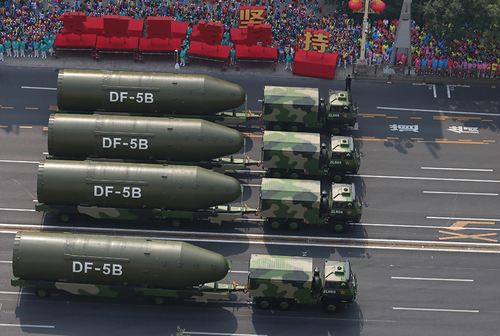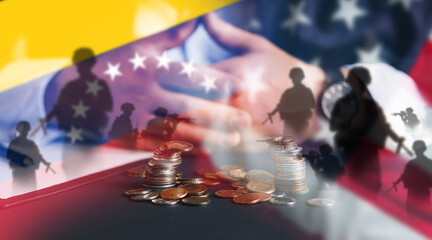This article was originally published by Selco at The Organic Prepper

Note from Daisy Luther: The biggest concerns in any long-term emergency are water and sanitation because the lack of these things can cause serious illness or even death. Because water and sanitation aren’t nearly as glamorous as guns and gadgets, they’re often overlooked in a preparedness plan. I asked Selco some questions about these important issues in this interview. The truth about it is dirty, unpleasant, and something for which you absolutely must plan.
Once there was no more running water, how did you get drinking water?
Just like most other things (especially when it comes to non-preppers) it was a matter of levels and layers.
The tap water was going on and off for a few days before service went completely off, so people had a few bottles of drinking water stored. But of course, most of us thought everything going to be restored very soon so nobody had thought about storing big amounts of water.
When it comes to lack of water and being unprepared, the levels and layers that I am mentioning meant that you first looked and asked for tap water (clean) for drinking. Then collecting water from rooftops sounded like a good idea. Then drinking directly from the river was good if there was no other source. And then, finally, when there was no other source. you simply drink dirty water even when you were sure it is quite dirty.
It was a matter of low resources, desperation, and of course low skill levels.
Our main sources were rain and the river.
Can you tell us about your rainwater collection system?
It was not anything smart, especially in the beginning.
The gutter system normally took water from the roof through pipes into the underground collectors and sewers. When we concluded that the running water was not coming back, we simply sawed off a piece of gutter and pushed it inside the main gutter that led from the roof system (on the side of the house that looked inside the yard). Then we collected water inside a barrel.
We just used the water collectment system that was existing there already, and just cut it off at a lower point, before the water was “lost” and redirected the water into a barrel.
It is actually pretty amazing how much water you can collect from the roof during one summer storm. A lot.
When it comes to that system of water collecting our main problem was lack of containers, because even if there is a huge amount of water to “catch” from the rain, we did not have enough adequate containers for that.
Probably if we were prepared in a smart way for that, our water problems would have been easier.
How did you purify/filter water for drinking and cooking?
Two main ways: boiling and filtering.
Filtering of the water was very rudimentary. We did not use any real filters, and people did not know how to make anything too complicated.
The most complicated filter that I saw in those times was a slightly changed version of a “bottle ” filter with rocks and sand with added cloth inside.
We used cloths for filtering, or gauze. If water was visibly contaminated (particles) we would repeat the procedure until the water looked satisfying for us.
Boiling was a widespread method of making water drinkable, and often the quality of stoves and fuel for it were “measured” by the time needed for water to boil.
Were the rivers and streams contaminated? If so, how quickly after things went bad?
River and streams in cities were polluted (if we talk about drinking) before the war because poor care was taken of it, and it was mainly because of industry.
When SHTF that kind of pollution went down because of obvious reasons (everything stopped working) but other kinds of pollutants were there. City services did not work and many people lived next to that river (upstream too). So it was polluted with everything, including bodies from time to time.
We drink it, sometimes even without boiling and filtering. I survived it, but I was sick many times, probably because of that.
How did you keep yourself clean?
By the standards from before SHTF and standards today we were not clean most of the time, because most of the time we did not have enough water for that.
By the standard of that time (SHTF) we managed to use very small amounts of water to keep ourselves as clean as possible.
Most of the time it was something like sponge bathing with a bottle of water.
It was a joke at that time. Often people would say, “I just had shower using wet napkin only(from MRE)”
Years later I saw a similar scene in a movie, and it brought memories back.
And actually it is a great thing to have a huge stash of those ready for SHTF.
When it was safe, we used the river for that, or people sometimes simply get naked in their yard during the rain.
What did you do for a toilet?
Very close to our house, through the destroyed building, there was small piece of land, which was “hidden” from all sides. We used that as a simple “dig a hole” latrine. Later we built something like primitive field latrine.
It was a simple hole in the ground covered with wooden boards, with channels leading away.
It worked more or less, but we had the good luck of having that place with enough “ground” close to home where it was pretty safe for spending that time there.
Folks use toilet everywhere that was available. Inside toilets were mostly out of use mainly because of the lack of water.
Of course. it contrubituted greatly to the city being a very dirty place.
Did you see an increase in sanitation-related illnesses like typhus, cholera? How did you treat those illnesses?
Everybody was at least once really sick from diseases that probably were caused by lack of hygiene, bad water and bad food.
Diarrhea, vomiting, exhaustion…
A lot of people had a couple of times heavy episodes of that, because simply, the whole chain of hygiene was really bad and broken.
Either you had problems with waste disposal, or bad water, or bad food, or simply you lacked personal hygiene.
It was a constant problem.
Sanitation problems were solved in a way that people would just throw away garbage from their own houses, as far as possible, or burn it when it was possible.
Because the system was out (of taking out garbage from that point) the result was that city was suffocating in garbage.
Diseases were inevitable.
Just like any other diseases they treated depending on knowledge and resources. In essence, people would try to cover it with medicines if possible and available, and with natural remedies.
Also, the sick person would be separated from other folks if possible.
Often method (and pretty stupid in that time because other bad factors) was to just leave a sick man to clean on itself, without food or anything, just a really small amount of water.
Do you have suggestions for some ways we can prepare for water and sanitation needs?
People usually do not understand how much consideration they need to take into solving the problem of a working toilet.
It is partly because it is maybe not a cool topic to discuss, but also it is something that we have taken for granted for many years.
Forget about jokes like, “If the SHTF forget about the toilet, it will be all over the place.”
If you are living together with 4 members of your family and one day the SHTF and your toilet is not working anymore it is quite a big topic to think about because you suddenly realize how often you need to go to the toilet and problems that it can bring. (However that may sound funny now).
With improper toilet techniques you are at a high risk for diseases, and when the SHTF, any kind of disease or illness will cripple you because you might need to perform heavy tasks.
Not to mention that “a small cut can kill you” because most probably, you are going to be your own physician, pharmacist, nurse etc.
There is lots of advice about how to deal with human waste: portable camping toilets, digging a latrine, even using it as a fertilizer or using it as a fuel (drying it) etc.
Some of this advice is clearly from people who do not have a clue about urban SHTF. Others are cool, but they are like more advanced solution (still the basic problem exists), and some of them work only in a wilderness situation.
I like to start with a very basic solution that solves my number one problem: what to do if my toilet does not work in my house or my apartment in an urban area.
A very cool and simple solution (and no, I did not “invent” it, it was there for quite some time) is having plastic buckets (the size that a toilet lid can be installed on it) and many plastic (heavy duty) bags that can be “installed” inside that bucket.
You still need to get rid of those bags later, but it is doable.
That is your immediate urban survival latrine. You can add some ash inside to make it more usable.
Often people if you ask them “how will you use the toilet when SHTF.” they talk about composting human waste, but your real problem is what do you do if SHTF and your toilet is not working, and you can not go out in woods (remember, you are in the city) or anywhere because it is not safe.
People often mention the fact that your toilet might work even when SHTF, you are just gonna need water to flush it.
That is actually a problem and the reason why you need to look for alternate ways. Water is going to be a big problem, and it is gonna be hard to get for other even more important things not to mention toilet. (unless you are living right next to a river or similar).
Just try to figure out today how much water you “spend” daily for flushing the toilet and you’ll get the point.
And do not forget that there is a chance that your toilets might be flooded, depending of what kind of collapse it is and area where you live.
So the “bucket toilet” technique is a start. Everything else is an upgrade if you have the means, space, and solutions.
If you have close space to your home where it is possible to dig a hole and make outhouse it is a good solution. Again, it will work for some time.
We are talking now about urban survival, and no matter how wrong or funny it looks to you, the point is to get it done in the fastest and cleanest and simplest possible way, and in a way that is the easiest possible to get rid of that waste.
By that you are minimizing the risk of many diseases.
Go with simplest solutions first and then upgrade on that.
All of you can figure pretty easily how much water you spend every day for all of your needs.
Then use that number when you plan how much of water you need to acquire per day when SHTF (through rain, river, wells, your already “stashed” tanks of water etc.) and you’ll see that there is probably scary difference between liters (or gallons) that you are using today and what you are going to be able to get when SHTF.
That means few things.
First and actually most important that you need to understand differences between necessity and comfort, in a way that for example having hot tub is great thing, but you won’t die if you do not have it, while not drinking enough water will get you killed.
So using water when the SHTF gets a new dimension if you think in that way. Maybe you are not gonna be able to be clean all the time, but you’ll survive.
Another thing is that you need to have a stash of water. Often people forget it and concentrate on food only (not to mention weapons only).
It is really cheap and easy to store some amount of water in canisters or barrels and keep it fresh by “refreshing it” on schedule.
There are calculations of how much time a man can live without water, but usually, there are no calculations of how much time a man can “operate” in hard conditions. You need to be able to run, hide, fight, be scared, be under stress, work hard. So, you need to have a stash of water immediatelly ready when SHTF.
Collecting water from your roof collection system and purifying it sounds cool maybe, but try being thirsty for a week looking at the sky while you are waiting for rain.
I use 50-liter barrels and 20-liter canisters for water stash, on the balcony and in the basement. And I have small bottles of water everywhere. Nothing smart or spectacular but it will do the job, at least until rain falls.
Pay attention to water containers, not only that they need to be usable for water, but also that you need to have them in big numbers and not only big barrels.
Big stuff is hard to move, and once you fill it (for example from the roof system) you may find out it is not possible to move it.
Also having too much “manipulation” with big containers means more chance that you are gonna pollute the water, so think about that too. For example, find a way how you are gonna fill your bottles from big containers and similar.
One more thing that comes to mind when it come to water collecting is tarps.
Tarps (nylon) are something that you absolutely need to have in order to help yourself during water collecting (collection and also for directing what you have collected).
Tarps have many uses in survival so you should have decent amount of them anyway.
It all comes to the levels and degree of SHTF that you might experience, but know that in some periods you’ll be forced to use a very low amount of water for hygiene.
A good method is using a sprinkler watering can and sponge for a bath.
Also, have other methods as a means of water-saving for hygiene for when times get really hard with water (like wet wipes, and hand sanitizers).
Ways to disinfect water to make it usable for drinking are numerous and all around the web. Sometimes the discussion about best method is so fierce that remind me of “best caliber for SHTF” discussion.
It is important to understand that some of the methods kill germs but do not make water completely safe for drinking.
I personally prefer a few ways for making water safe (or safer) to drink: bleach, iodine tincture, boiling ,homemade filters (sand, stone, charcoal…).
I did try few portable purifiers like steripen and hand pump filters during the physical survival courses) and they worked (I did not get sick). It would be interesting to test it in a long term situation, and yes, it is good to have them.
In the end, your plan all comes to the availability of water. For example, if you live close to a creek or river it changes your perspective completely in the long run.
About the Author
Selco survived the Balkan war of the 90s in a city under siege, without electricity, running water, or food distribution. In his online works, he gives an inside view of the reality of survival under the harshest conditions. He reviews what works and what doesn’t, tells you the hard lessons he learned, and shares how he prepares today. He never stopped learning about survival and preparedness since the war. Regardless what happens, chances are you will never experience extreme situations like Selco did. But you have the chance to learn from him and how he faced death for months. Real survival is not romantic or idealistic. It is brutal, hard and unfair. Let Selco take you into that world. Read more of Selco’s articles here: https://shtfschool.com/blog/ And take advantage of a deep and profound insight into his knowledge and advice by signing up for the outstanding and unrivaled online course. More details here: https://shtfschool.com/survival-boot-camp/










0 Comments